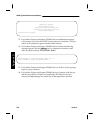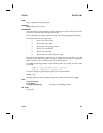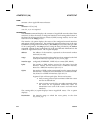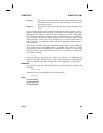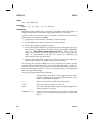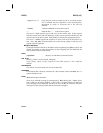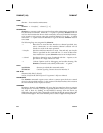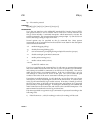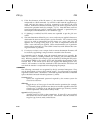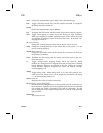
ATPING ( 1M ) ATPING
NAME
atping - send AppleTalk Echo Protocol (AEP) Request packets
SYNOPSIS
atping [ -d sec ] net.node [packetsize [count]]
DESCRIPTION
atping is intended for use in network testing, measurement, and management, pri-
marily for manual fault isolation. Tracking a single-point hardware or software
failure in an AppleTalk network can often be difficult. atping uses the AppleTalk
Echo Protocol (AEP) Request packet to elicit an AEP Reply from a host or gateway
equipped with an Echoer process attached to the statically assigned socket number
4. Because of the load it could impose on the network, hosts, and gateways, atping
should not be used during normal operations and it should not be used from
automated scripts.
To use atping for fault isolation, the AppleTalk address of the target node must be
specified in net.host format. It is also possible to contact routers on networks
OTHER THAN that to which the LCS60 is attached by specifying a zero node, as
in net.0 (Refer to Inside AppleTalk, p. 4-7). It is not possible to contact the
AppleTalk addresses that correspond to the LCS60’s virtual network port or to its
Ethernet port.
By default, atping sends an AppleTalk data packet that is 64 bytes long. The first
byte is always the AEP header; this is followed by a time stamp. The remainder of
the packet is padded with additional bytes to fill out the packet. The size of the
packet, in bytes, may be changed by specifying an alternate packetsize on the com-
mand line.
By default, atping sends one packet per second and prints one line of output
showing the round trip time for every packet sent. The delay between packets (in
seconds) can be changed by specifying the argument to the -d option on the com-
mand line. Since a packet for which no reply has been received by the time the
next packet is sent is declared "lost", it may be necessary to use -d to increase the
inter-packet delay to communicate with hosts over slow networks, such as dial-up
connections over the virtual network.
By default, atping continues to send packets until it is killed. If count is specified
on the command line, atping will send the specified number of Echo Requests,
and then exit. Summary round trip time and packet loss statistics are displayed
just before atping exits.
E-4 Issue 3



